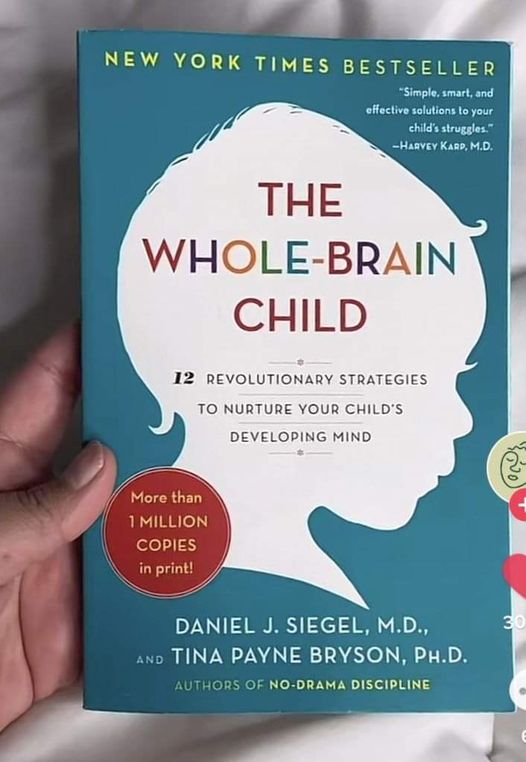The Whole-Brain Child by Daniel J. Siegel and Tina Payne Bryson. Here are 10 key lessons you can glean from the book:
1. Understanding the "Upstairs Brain" and "Downstairs Brain":
The book introduces the concept of the two main parts of the brain: the upstairs prefrontal cortex (thinking, planning) and the downstairs limbic system (emotions, survival instincts). Recognizing how these parts interact is crucial for understanding your child's behavior.
2. Building Bridges Between the Brains:
Strategies like "connection before correction" and "name it to tame it" help connect the emotional downstairs brain with the logical upstairs brain, facilitating communication and emotional regulation in children.
3. Play is More Than Fun - It's Essential:
Play allows children to experiment, explore emotions, and develop important skills like communication, problem-solving, and empathy.
4. Importance of "Left-Brain Logic" and "Right-Brain Creativity":
Both logical thinking and creative expression are crucial for healthy development. Provide opportunities for both in your child's life.
5. Respectful Discipline vs. Punishment:
The book advocates for discipline that focuses on teaching and guiding, rather than punishment that can damage self-esteem and relationships.
7. Cultivate Empathy and Connection:
Helping children understand and express their emotions, and validating their feelings, fosters strong emotional bonds and healthy development.
8. Importance of Sleep and Physical Activity:
Adequate sleep and physical activity are vital for both physical and mental well-being, impacting mood, focus, and overall development.
9. Screen Time Requires Wise Management:
Mindful and limited screen time allows for healthy exploration and learning, while excessive screen time can negatively impact attention, sleep, and social-emotional development.
10. Nurturing Your Whole Brain Too:
Remember, your own emotional well-being significantly impacts your child. Taking care of yourself and managing your own stress is crucial for creating a calm and supportive environment for your child's development.
Every child develops at their own pace. These lessons offer a framework to understand and support your child's unique journey, but avoid comparing your child to others and focus on fostering a safe and loving environment where they can thrive.




